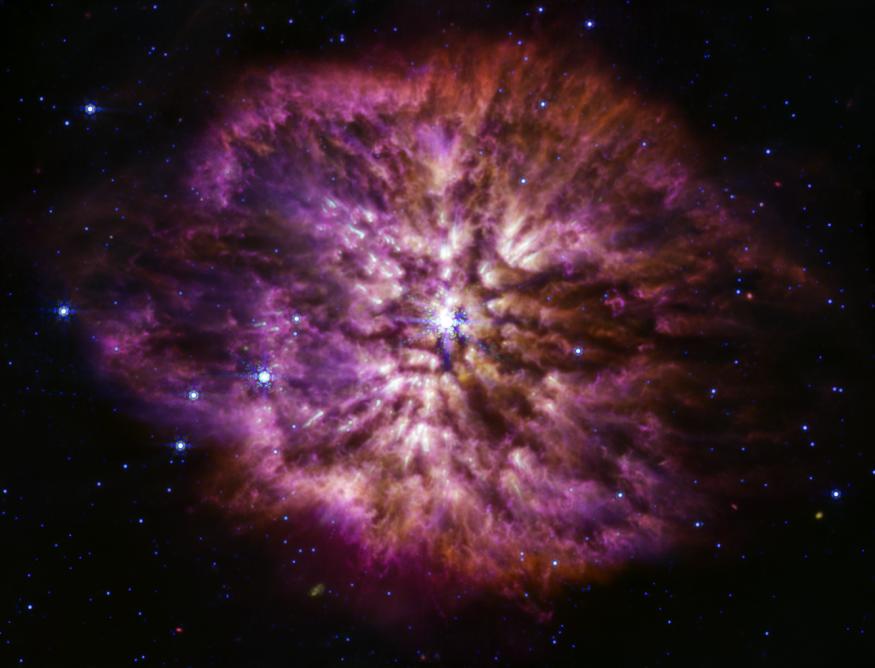James Webb Telescope Captures Rare Supernova Precursor

NASA has released an image of WR 124, a Wolf-Rayet star about 15,000 light-years from Earth in the constellation Arrow. The image of the giant star was taken by the James Webb Space Observatory (JWST).
The telescope received its first image of the star WR 124 in June 2022 – this rare object is in the Wolf-Rayet phase. Such stars become one of the largest and brightest stars in the night sky, and this phase is followed by a supernova explosion in massive stars. Scientists estimate that the mass of WR 124 is 30 times the mass of the Sun, and to date, its loss of matter is ten times the mass of the Sun. Over time, the gas ejected by the Wolf-Rayet stars cools and forms cosmic dust.
Cosmic dust, which has been successfully observed in the infrared, is of interest to astronomers for a number of reasons, and primarily because it is an important building block for the objects of the universe. It can harbor forming stars and form planets. At the moment, scientists do not have a convincing theory that can explain the amount of cosmic dust present in the Universe, there is more of it than theory predicts, and it is likely that new data from James Webb will help to solve this problem.



